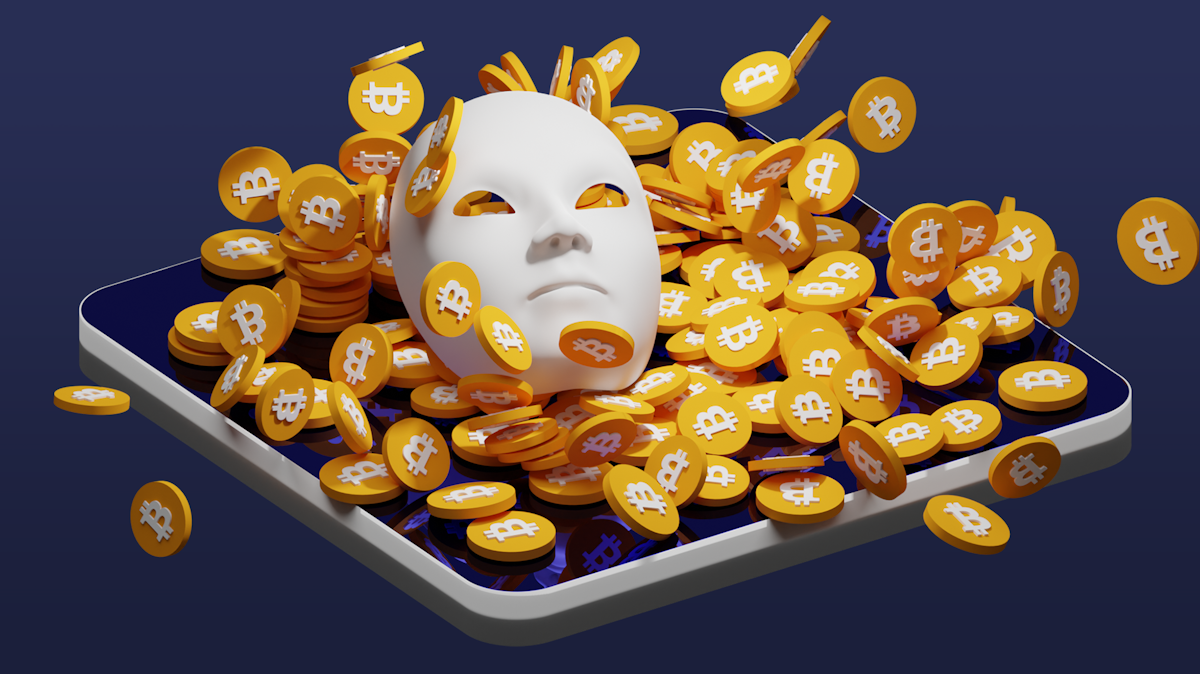Who is Satoshi Nakamoto?
Satoshi Nakamoto is the pseudonym of the creator of Bitcoin. This person or group has managed to keep his identity hidden until now. Who is behind Bitcoin? The name Satoshi Nakamoto is legendary in the world of crypto. We will talk about that in this lesson. Everyone loves a good legend. Perhaps this mythical status will last as long as that of other people from ancient times. Let's dive into this story! Who is Satoshi Nakamoto anyway?
Brief summary
✔️ Satoshi Nakamoto is the pseudonym of the inventor of Bitcoin. This person or group has remained unknown to date.
✔️ In 2008, Satoshi Nakamoto mailed a group of Cypherpunks a white paper of the Bitcoin software via the Cryptography Mailing List.
✔️ Satoshi Nakamoto is an advocate of decentralization and uses his anonymity to protect himself from personal attacks.
✔️ Satoshi Nakamoto disappeared in April 2011 after his last words:
"I've moved on to other things. It's in good hands with Gavin and the rest."
Satoshi's legacy
In the cryptocurrency world, you often come across the term satoshi against as the smallest component of a cryptocurrency. This is a tribute to the inventor of Bitcoin who used the pseudonym Satoshi Nakamoto. Some cryptocurrencies use different terminology, such as Ethereum, which Wei uses.
We are dealing with a real mystery here. After all these years, we still don't know who this person or group is.
Who is our Sherlock Holmes?
Ever played Cluedo? This is one of those detective stories, where "suspects" will pass the review and deception and false claims will test your deductive skills.
By the way, the name Satoshi Nakamoto has the following meaning: satoshi means 'quick-witted' or 'wise' in Japanese. Naka means "relationship" and moto means "origin.
As far as we are concerned, you are very wise if you know the origin of the relationship between these words!
Will the real Satoshi please stand up?
First mention of Satoshi Nakamoto
In 2007, the elusive Nakamoto was already working on the Bitcoin software white paper, and on Nov. 1, 2008, an email arrives at the Cryptography Mailing List:
The directions
The sender is Satoshi Nakamoto. He published and shared this article with a number of Cypherpunks, a group of loosely connected individuals who have been promoting and propagating cryptographic and privacy-enhancing technology since the 1980s.
So he must be a Cypherpunk, otherwise you don't get into such a group, a cryptographic programmer.
Then in this mailing list, people talked back and forth about all kinds of things. For example, someone said to Satoshi:
"You won't find a solution to political problems in cryptography."
He replied:
"In terms of freedom, we can gain years, the government can dismantle centrally managed networks like Napster simply, but peer to peer remains intact, like Tor and Gnutella."
Reason anonymity Satoshi Nakamoto
So his anonymity was also a protection against personal attacks on him by vested interests. If his real identity became known, he could be sued by governments or central banks for illegal activities or other fabricated charges to dismantle Bitcoin.
So this mysterious figure did not want to publish his or their identity lightly. Had he or his group of people been questioned we might never have heard of Bitcoin.
Enemy of the state
This is not such a crazy thought. After the attacks on the Twin Towers in 2001, Phil Zimmerman was sued and declared enemy of the state because he gave privacy to people sending e-mail through Pretty Good Privacy (PGP). Because the government wanted to read those e-mails because of potentially important information about terrorists they dismantled his company.
So Satoshi was an advocate of decentralization.
His emails are still preserved. Here you can read them, although they are rather technical in nature.
More clues to Satoshi Nakamoto's identity
In this white paper, Nakamoto spoke of both I and we. This seems to indicate that this could be a group.
In his conclusion in this paper, he clearly talks about we. But it may very well be that he wrote about we by now, after people had joined. It looks a lot like the work of one person.
Bank bailout financial crisis 2008
In the Bitcoin Genesis block, Nakamoto writes:
"The Times 03/Jan/2009 Chancellor on brink of second bailout for banks".
The Chancellor is the finance minister in Britain. Why would he refer specifically to the United Kingdom if he did not himself have a connection with it, or lived there? So there is a good chance he was an Englishman or a group from England.
This block was also mined from England, according to computer data.
Satoshi Nakamoto posted virtually nothing in the hours 5-11 AM GMT. This suggests that he was sleeping during that time. So he was probably working and living in England or a surrounding country, unless he had weird working hours.
Famous last words Satoshi
Satoshi Nakamoto disappeared in April 2011, after his last words:
"I've moved on to other things. It's in good hands with Gavin and the rest."
Gavin is Gavin Andresen. Along with Hal Finney and Nick Szabo, they formed a team around Bitcoin, among a series of other developers.
During this time, Hal Finney was told that he was suffering from ALS. So it is possible that this had something to do with each other and that Hal is Nakamoto.
In recent years, quite a few theories have been written about the most mysterious figure concerning cryptocurrencies. Grab your pipe and your magnifying glass and guess his real name.
Who is Satoshi Nakamoto?
Hal Finney. Since Hal Finney was the recipient of the first Bitcoin transaction, he may very well be Satoshi Nakamoto.
He was a Cypherpunk member and anti-establishment. He had Reusable Proof of Work. invented and was in favor of privacy and against centralization and control.
He also ran the entire Bitcoin network on his computer for some time. He worked for PGP and was told he had ALS around the time Nakamoto said goodbye to his creation Bitcoin. He was from the United States.
He seems an excellent candidate.
Craig Wright. This Australian is notorious for his many lawsuits and for claiming in 2015 that he was the hub of the Bitcoin network and thus, according to himself, the man behind the pseudonym Satoshi Nakamoto, although he did say it was a group. He is the hotshot at Bitcoin SV.
Craig Wright said he would one day provide "extraordinary evidence for an extraordinary claim," but we haven't heard anything about that yet. Anyone who signs a message with Nakamoto's private key thereby provides proof that it is him. Craig Wright has not done this yet, so we will take this with a pound of salt.
A collective. Because this group wanted the idea of Bitcoin to take center stage and not themselves, they relegated themselves to the background by using a pseudonym.
Since quite a few players are well known, this theory may not be the most plausible either.
Dorian Nakamoto. This is a Defense Department employee from America with a libertarian attitude and a Japanese background.
Besides his name, there is nothing that reminds one of Bitcoin. Dorian Nakamoto is an engineer who had not even heard of Bitcoin before Newsweek put him forward as the potential and illustrious Satoshi Nakamoto.
Dorian Nakamoto's full name, by the way, is Dorian Prentice Satoshi Nakamoto, so we understand how you got that link.
Paul le Roux
Paul Who?
Paul le Roux is a criminal from Rhodesia, now Zimbabwe. Until 2019, no one had ever heard of him around the Satoshi Nakamoto controversy. That year, there was a lawsuit by Kleiman v. Wright, who of Bitcoin SV.
In that lawsuit, Wright wanted to protect all names from disclosure, but his lawyer forgot a footnote that referred to le Roux's Wikipedia page. So people went to see what the link might be.
Early versions of Bitcoin featured GUI code, widely used in poker software, exactly what le Roux was working on. His first software project, E4M, was open source and had public encryption, just like Bitcoin.
A year after Satoshi disappeared, le Roux was arrested and disappeared in prison. Coincidence?
On his Congolese ID, his name reads "Solotshi." That looks a bit like Satoshi.
As far as we are concerned, le Roux is our long shot!
Nick Szabo. This is an American lawyer and computer scientist.
This man was working on smart contracts as early as 1996. In 1998, he devised an asset he called Bit Gold, a protocol that performed online transactions without depending on third parties. That looks a lot like Bitcoin.
In addition to a similar writing style, both he and Nakamoto referred to Carl Menger, an Austrian economist of the 19th century.
In particular, we find the last clues here tremendously strong. In our opinion, this is the best candidate.
What do you say? Who do you think is the best candidate to be Satoshi Nakamoto?

